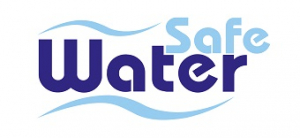About WATERSAFE INC
This author has yet to write their bio.Meanwhile lets just say that we are proud WATERSAFE INC contributed a whooping 9 entries.
Entries by WATERSAFE INC
Landfill Leachate
January 9, 2022 /0 Comments/in Uncategorized /by WATERSAFE INCLandfill leachate is a wastewater with very complex composition leached from a landfill or incineration power plant. Its water quality and quantity will change with the age and season of the landfill. COD, ammonia nitrogen and heavy metals are very high. WaterSafe Inc. applies new technologies such DTRO and MBR for treatment of landfill leachate.
Spent Caustic Treatment Package
January 9, 2022 /0 Comments/in Uncategorized /by WATERSAFE INCAs result of removal of impurities such H2S and Mercaptans in oil and gas, spent caustic is generated. Spent caustic is high toxic and contains several hazardous contaminants such as sulfides, Mercaptans, sodium salts and high COD level. Organics in spent caustic are very complex due to its source such as Phenols, Naphthenics and Cresylics. […]
EDI
October 12, 2021 /0 Comments/in Uncategorized /by WATERSAFE INCTraditionally high purity water is produced by a combination of membrane separation and ion exchange processes. Electrodeionization (EDI) is an electrically-driven water treatment technology that utilize ion exchange membranes and resin to remove ionized species from water by electrical driving force, An EDI stack has the basic structure of a deionization chamber. There is an […]
Ceramic Membranes
October 10, 2021 /0 Comments/in Uncategorized /by WATERSAFE INCUnlike conventional membrane which are from polymer, ceramic membranes are made of inorganics such as alumina, zirconia oxides, silicon carbide and etc. Ceramic membrane normally has an asymmetrical structure with porous support active membrane layer. Ceramics membrane can categorize based on different modules into flat membranes, roll membranes, hollow fiber membranes, and tubular membranes. The […]
Pressure Vessel
May 25, 2021 /0 Comments/in Uncategorized /by WATERSAFE INCA pressure vessel holds the reverse osmosis membrane elements, it is also called pressure tube when membranes are spiral wounded. A typical RO pressure vessel can contain six membrane elements. Pressure vessel is important part of RO process as it is to handle membranes in high pressures. The pressure vessel contain permeate ports at terminal […]
ED/EDR
May 5, 2021 /0 Comments/in Uncategorized /by WATERSAFE INCElectrodialysis is a membrane-based process that uses electrical driving force. In this process by using alternating Anion–selective membranes (AMs) and Cation-selective membranes (CMs), situated between an Anode (+) and a Cathode (-), the separation of ions happens. Applied electric field, anions and cation will move towards the Anode and Cathode, respectively. Anions are stopped by […]
Membrane Separation
May 5, 2021 /0 Comments/in Uncategorized /by WATERSAFE INCMembrane separation is promising technology in water and wastewater for conventional and emerging contaminates. are classified, based on the type of driving force they use. The different type of driving force that separate the water includes: a pressure differential and reverse ; and a electrical force with to an ion exchange that facilitate migration […]
Our Services
February 19, 2021 /0 Comments/in Uncategorized /by WATERSAFE INCWe are a global supplier of water and wastewater system, equipment and materials. We will be a with you from construction, commissioning and operation.
Our Solutions
Water treatment
Wastewater reclamation
Wastewater treatment
Contacts
Address: 112 Springbrook Dr., Richmond Hill. ON, Canada
Email: Info@watersafe.ca
Website: www.watersafe.ca
